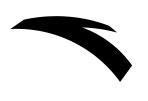
Choosing sun-protection clothing
Choosing sun-protection clothing
You've probably seen SPF. But what about UPF? Now, let's throw in UVI. Still trying to figure it out? While sun- or UV-protection jargon can be confusing to the uninitiated, understanding it will help you make better decisions when it comes to enjoying the outdoors without looking like a boiled lobster at the end of the day or a walking leather craft after a few years of inadequate sun protection.

While we've been taught to use sunscreen since childhood, few of us follow the best practices or each product's instructions—for example, applying a new coat every 2 hours, using x amount for the entire body, etc. And even if we are the model of sunscreen diligence, getting an even coat across our body is extremely difficult and time-consuming.
The concept of sun-protection clothing has been around for a long time. With improvements in material technology, sun-protection clothing is more comfortable than ever. And with a standardised rating system [i.e., UPF], we have a better idea of what works.

UPF-rated clothing, especially those rated 40 to 50+, blocks a large percentage of UV rays. Modern fabrics also keep you cool and/or remain breathable. Reading this from Southeast Asia? Then you'll know that the added cool-to-the-touch and breathability features are game-changing in our hot and humid climate.
Sun-protection clothing vs sunscreen
In the sun-protection conversation, gear [i.e., clothing] is, for the most part—underrated and underutilised. While sunscreen is the choice of sun protection for most people, it must be reapplied as it degrades over a day. Sunscreen is trickier to put on right, and it’s more affected by sweat, water and being rubbed off. And depending on the ingredients, there are other concerns [e.g., skin sensitivities and reef-safeness]
Sun-protection clothing, in comparison, offers a simple and effective barrier. While its effectiveness can also be affected, it is a longer-lasting and more reliable option for getting more coverage and only requires you to put it on.
Understanding SPF, UPF and UVI
Ultraviolet index [UVI]
The standardised international index describes the level of solar UV radiation on the Earth's surface—readings range from 0 to 11+ and the values are grouped into various categories [e.g., 11+ = Extreme]. A higher reading indicates a more significant potential for harmful effects on the skin and eyes.
So, what affects UVI?
- Time of day [peaks late morning to early afternoon]
- Season of year (spring and summer in temperate countries, anytime it's not monsoon season in Southeast Asia)
- The closer we are to the equator
- Altitude [the higher up, the closer we are to the rays, the higher the UVI]
- How thick the ozone layer is [thicker is better]
- Cloud cover, smog, and smoke [more clouds reduce UVI—smog and smoke too but those come with other health concerns]
Sun protection factor [SPF]
SPF is a rating used for sunscreen, and it's based on the time it takes for UV-exposed skin to redden [i.e., get burnt] and only accounts for the stopping power of UVB rays. That means how much UVA it protects you from is not measured, not that it doesn't block UVA.
So, what does the number represent? SPF 15, if used correctly, protects you 15x longer than not using any sunscreen. So, if your skin burns or begins experiencing harmful effects after 20 minutes of sun exposure, SPF 15 should bump it up to 300 minutes [i.e., 5 hours]. However, as we mentioned at the start of this article, sunscreen can be particularly susceptible to sweat, water and being rubbed off.
Ultraviolet protection factor [UPF]
UPF, on the other hand, is a rating system used for apparel. Unlike SPF, UPF accounts for both UVA and UVB blocking abilities.
Most UPF-rated apparel relies on a combination of fabric types [e.g., polyester], weave, colour and thickness to create a physical barrier against UV rays. Here's a simple table to help you interpret UPF ratings.
|
UPF50+ [A-UV PROTECT] |
UPF30 |
UPF15 |
|
Considered excellent protection |
Considered good protection |
Considered minimum protection |
|
~2% of UV rays pass through |
~3.3% of UV rays pass through |
~6.7% of UV rays pass through |
What does this mean for staying active in hot and humid countries?
Sun-protection clothing to cover most areas

Easy to put on, more comfortable, and providing all-day sun protection with more coverage, sun protection clothing can make up your main line of defence.
Going for a run? Our A-UV PROTECT running t-shirt protects without additional material to your usual running kit. Consider A-UV PROTECT arm sleeves if you want the additional protection of long sleeves but don't want to commit to wearing a long-sleeved top.
Sun-protection clothing is lighter and more breathable than ever, making effective layering simple and comfortable enough for all-day wear and hiking in hot and humid weather.
By Matthew Leu
